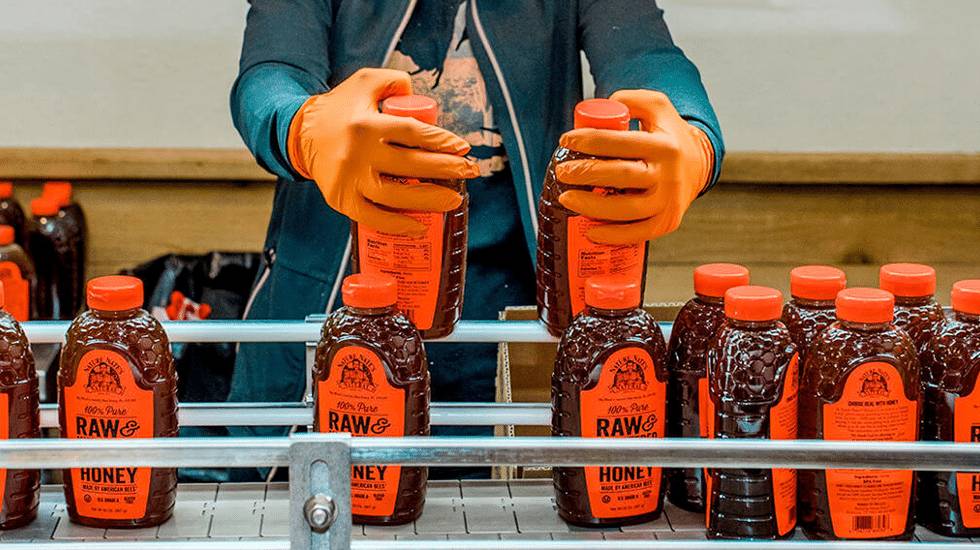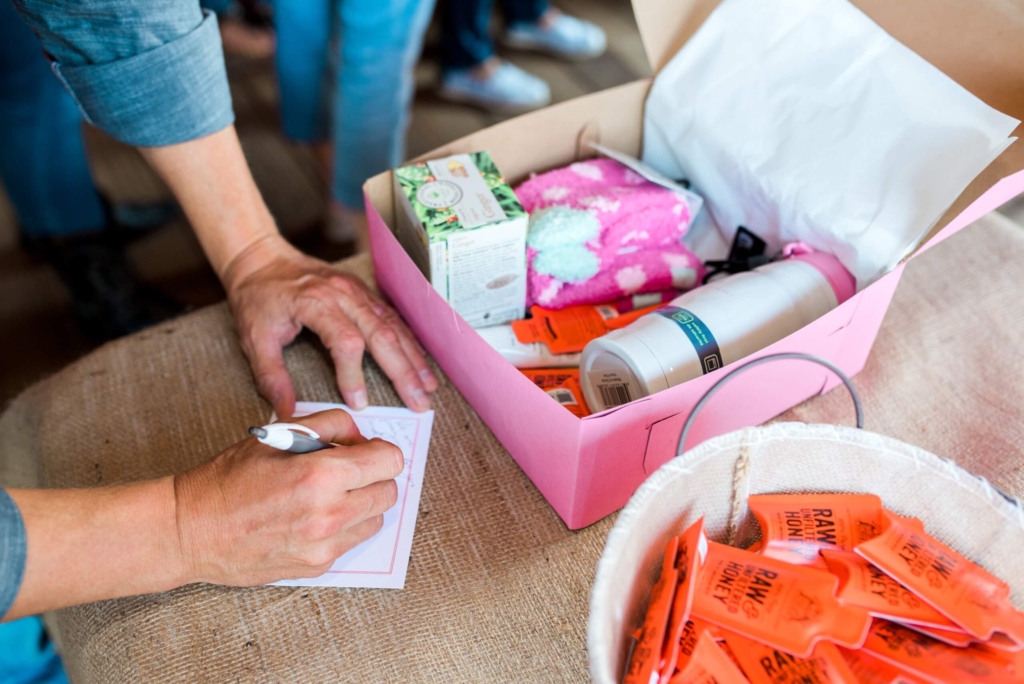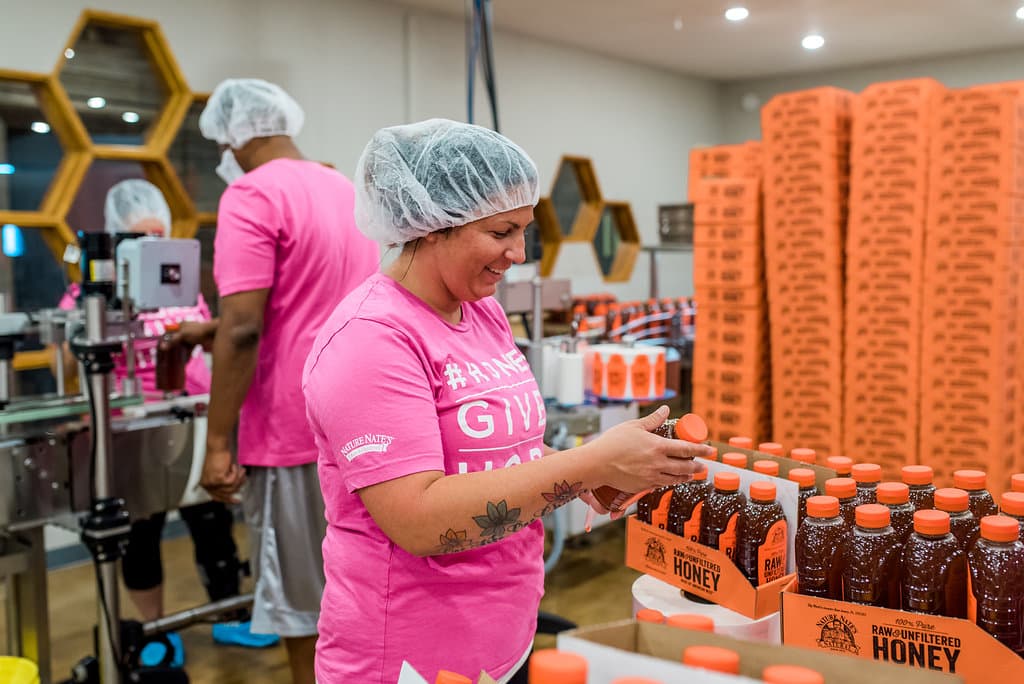


An interview with Becca May, National Breast Cancer Foundation Advisory Council member & SVP of Marketing at Nature Nate’s Honey Co.
Retail presence makes a huge difference for big and small brands alike. We consistently hear from corporate partners who want advice and tips about how to navigate retailer relationships, especially with cause-marketing campaigns. To that end, we are fortunate to partner with some experts in this area at top brands in the country.
The National Breast Cancer Foundation team connected with Becca May, Senior Vice President of Marketing at Nature Nate’s Honey Co., about her first-hand experience pitching products and nurturing relationships with top retailers like Kroger, Target, and Walmart. The following Q&A highlights her personal experience and top tips for getting your product into dream retailers.
Becca May: Every brand should recognize the same thing: Everything starts and ends with the consumer. The same goes for our retail partners. They are shopper obsessed, just like we are consumer obsessed.
It’s critical to find the crossover between who their shopper is and who our key consumer is. Start the process by understanding:
For example, at Nature Nate’s, it goes beyond how our customer shops and then cooks for her family, packs lunch and snacks for her kids, starts her morning, or enjoys drinks at home. There are other facets to her—causes she cares about, things that are important to her related to her own health, her kids’ health, her family’s health, and community health.
Understanding what’s important to our customer beyond a product is critical.
That’s where partnerships like National Breast Cancer Foundation can be so interesting. Women’s health is hugely relatable and important. For my core consumer at Nature Nate’s, women’s health and breast health are critically important to her personally, but with 1 in 8 women facing breast cancer, it’s also critically important to her family and community. It’s something she has been touched by.
When you can find that overlap of serving your consumer and providing a great best-in-class product, that’s when you win.
Want to go a step further? Meet your customer with a partnership and a donation that she has been a part of with her purchase. Now you’re better serving your core consumer, which gets retailers excited because you’re better serving their shoppers, too.

A. Every retailer is different. It has to do with how they offer promotions, structure additional displays, and when their review periods are. Most retailers need seasonal pitches at least 9 months to 1 year in advance.
Retailers vary in terms of who is easiest to get into. It’s always easier to get add-ons, like incremental display (additional shelf space in other areas of the store) when you’re already being sold there.
Selling something for incremental display, like getting Nature Nate’s specialty pink bottles displayed in produce, for example, is easier when our SKU is already in the system and sold in store.
When you’re trying to break into a new retailer, the depth of the marketing and relationships you have is key. You must know your customer inside and out and have additional things you can offer the retailer. You might be pitching honey, for example, to a shopper (person making the buying decisions for the retailer) who doesn’t care about the honey, but the pink label resonates. Sometimes it isn’t just about the product, but the entire offer.
A. It’s important to know that most retailers have separate buyers for different categories of products. The produce buyer is different from the home goods buyer and so on.
If you have the correct buyer but are having trouble, brokers are a potential solution. Brokers are agencies that are usually deeply ingrained within the retailer. Often you can lean on a broker if you’re not able to go in directly to a retailer. To find a broker, ask for referrals from other people in your industry or at the retailer.
A broker will know all the buyers and what’s important to them. A lot of times you’re not even paying a broker until they get your product into the store. This can be a low-risk option.
If you’re working with a charitable partner, you could also try reaching out to the retailer via social media to highlight the partnership and why it matters. Retailers are more accessible now than ever before. Get creative when reaching out!
Also, many retailers will have new brand and product offering times where you can pitch your product for 5-10 minutes to a board. Research when those times are and be prepared to pitch your product as the perfect fit for their demographic.
Always remember, it starts and ends with the customer. Retailers care immensely about their customers. If you can stay focused on your product offering and marketing support, that puts the customer first. It will make a difference when you enter those meetings.
A. The Nature Nate’s team pitched our pink honey bottles to a national grocer partner. We focused on the campaign and how we were going to drive awareness of honey and the honey’s opportunity to give back during Breast Cancer Awareness Month.
We didn’t know that the buyer’s wife was a breast cancer survivor. It was a win because we were able to strike up a very personal, real, and meaningful relationship with him moving forward that we never would’ve had just talking sales numbers, velocities, and trade spend. The unanticipated surprise was that our giveback was something that personally impacted him, not to mention many, many shoppers in those stores.

A. Fatigue is palpable right now. Some customers are fatigued by the constant push of corporate social responsibility programs. My encouragement to brands is:
Think creatively.
It’s not just putting products on a shelf and being done — how are you supporting the product in a meaningful way on social? What interesting things can you do with other brands to make it a multi-dimensional offering or campaign? How can you make it personal and connected to the consumers you have in your own backyard?
Be consumer-obsessed.
First, you have to invest to understand who your core consumer is. Don’t be afraid to take risks, then test and learn against them. Digital marketing has provided us with brilliant ways to take risks and learn. Testing is ultimately low risk in terms of resources and dollars, so don’t be scared to put stuff out there and see if it works.
Stay authentic to your brand.
Just like knowing who your core consumer is, you have to know what your brand is all about. Then stay authentic and true to that in everything you do. This applies to partners and causes that your team is going to choose to invest in as well as your sales and marketing efforts.
Have more questions about retail partnerships? Leave a comment or fill out the form below.
Donations are always appreciated, but there are lots of great ways to get involved.